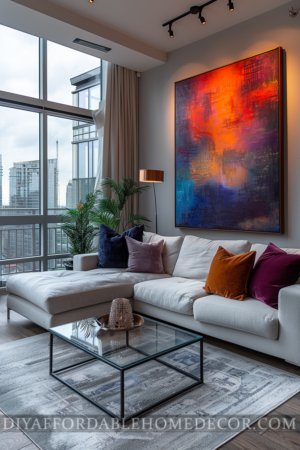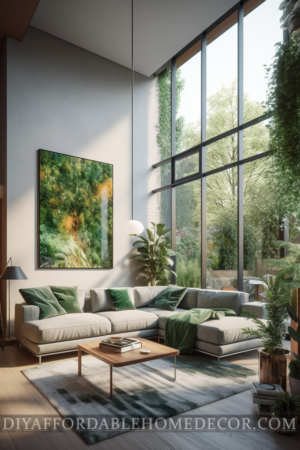 Introduction to Interior Design
Introduction to Interior Design
Interior design is more than just arranging furniture and choosing paint colors. It’s about creating a space that not only looks good but also feels like home. Understanding the basic principles and elements of interior design can empower you to transform any room into a beautiful and functional space. So, let’s get started!
Finding Your Style
Every successful room interior starts with a clear idea of your personal style. Whether you’re drawn to traditional, contemporary, or the modern farmhouse look, identifying your style is the first step in your interior design journey. Take some time to explore different styles and see which elements resonate with you. Remember, your home should be a reflection of your personality.
Traditional Style
- Characterized by classic furniture, rich color schemes, and intricate details.
Contemporary Style
- Known for its clean lines, neutral colors, and minimalist approach.
Modern Farmhouse
- A blend of rustic elements with modern design, featuring natural textures and a neutral color palette.
Space Planning and Layout
Effective space planning is crucial for any design project. It’s not just about filling a room with furniture but about optimizing the available space to create a functional layout. Here are some tips to get you started:
The Rule of Thirds
- Divide your room into thirds and place focal points at these intersections to create a balanced look.
Furniture Arrangement
- Consider the flow of traffic and arrange furniture in a way that allows for easy movement.
Open Floor Plan
- If you have an open floor plan, use rugs or furniture to define different areas like the dining table for the dining area and a sofa set for the living room.
Lighting Design and Tips
Lighting plays a significant role in setting the mood and ambiance of a room. From natural light to floor lamps, the right lighting can make your space feel inviting and comfortable.
Natural Light
- Utilize natural light as much as possible. It not only saves energy but also makes the room look more open and airy.
Floor Lamps and Ceiling Lights
- Use a combination of floor lamps and ceiling lights to create the perfect balance of illumination.
Dimmer Switches
- Install dimmer switches to easily adjust the lighting according to your needs, whether you’re reading a book or hosting a dinner party.
Color and Texture Selection
Choosing the right color palette is an important aspect of interior design. Colors can influence our mood and the overall vibe of a room. Similarly, textures add depth and interest to the interior.
Psychology of Color
- Warm colors like red and orange can energize a space, while cool colors like blue and green have a calming effect.
Texture Mix
- Combine different textures like a velvet sofa with a wooden coffee table to make your room more visually appealing.
Furniture and Accessories
Furniture and accessories are the finishing touches that bring your design to life. From a cozy sofa to decorative pillows, these elements enhance the overall look and feel of your space.
 Furniture Selection
Furniture Selection
- Choose furniture that complements your style and fits well within the space.
Accessorizing
- Use accessories like wall art and decorative vases to add personality to your room.
DIY Decorating Hacks
You don’t need a big budget to create a beautiful space. Here are some DIY decorating hacks to get you started:
Repurpose and Upcycle
- Transform an old ladder into a bookshelf or turn wine bottles into decorative vases.
Handmade Wall Art
- Create your own wall art using simple materials like canvas and acrylic paint.
Storage Solutions
An organized space is a happy space. Effective storage solutions can help you keep clutter at bay and make your room more functional.
Built-in Shelves
- Utilize empty walls by installing built-in shelves.
Multi-functional Furniture
- Invest in furniture that offers additional storage, like beds with built-in drawers.
Budget-Friendly Design Ideas
Designing a beautiful space doesn’t have to break the bank. Here are some budget-friendly ideas:
Thrift Store Finds
- Explore thrift stores to find unique pieces at affordable prices.
Prioritize
- Focus on key pieces that will make the most impact and plan your budget around them.
Maintaining and Updating Your Design
Interior design is not a one-time project but an ongoing process. Here are some tips for keeping your space fresh and updated:
Seasonal Updates
- Change your cushion covers or add seasonal decorations to refresh your space.
Flexibility
- Be open to rearranging furniture or swapping out accessories to keep your interior design fresh.
Conclusion
Interior design is an exciting journey of creativity and discovery. With these tips and tricks, you’re well on your way to creating a space that is not only beautiful but also uniquely yours. So go ahead, unleash your inner interior designer and transform your home!
FAQs (Frequently Asked Questions)
1. How do I determine my interior design style?
Start by exploring different styles and see which elements resonate with you.
2. Can I decorate my home on a budget?
Absolutely, with some creativity and planning, you can design a beautiful space without spending a fortune.
3. What are some common interior design mistakes to avoid?
Overcrowding a room and ignoring the importance of lighting are some common mistakes.
4. How do I choose the right colors for my space?
Consider the mood you want to set and choose colors that help achieve that atmosphere.